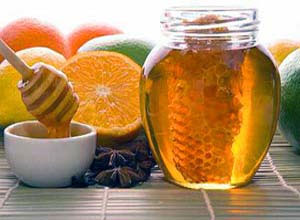Although a considerable number of Prophetic Medicine treatises were written, we do not have the name of any medical practitioner known for practicing this type of medicine.
The reason for this, of course, may well be that our written sources are for the most part skewed towards the Greek-based system and have omitted details of other practices. The treatises on Prophetic Medicine appear to have been addressed to the same audience as the Islamic tracts on the plague. Both types of writings were especially popular in the 13th and 14th centuries, and later.
The plague tracts have as their primary focus the collection and interpretation of various hadith that were considered relevant to the concept of infection and the appropriate social reaction to contagious diseases.
They also attempted to offer some medical explanations and remedies for the plague, and sometimes historical documentation of the plague up to that time.
They, like the treatises on Prophetic Medicine, were mainly written by religious scholars, although a few were composed by writers trained both as physicians and theologians.
Most Commonly Documented Prophetic Remedies
Henna

Henna (scientifically known as lawsonia inermis) has been well known for a long time in the Muslim world. It is extensively grown in India and Sudan, and is used mainly for cosmetic purposes.
The plant is sometimes called the “Magic Plant” because it has a great healing effect, contains many healing substances like tannine and other glue-like substances, and it has an anti-microbial and anti-viral effect. It is natural, inexpensive, and has no known side effects when taken orally. Indications for its use are as follows:
Burns: It is very effective when applied to a first or second-degree burn. It – reduces pain. -reduces fluid loss from the burn site, which is important if the area is large. -has an anti-microbial effect, and so reduces the risk of infection. -sticks on the wound site until healing is complete. -is easy to apply either in paste or powder form. -is inexpensive and easily available.
-reduces fluid loss from the burn site, which is important if the area is large. -has an anti-microbial effect, and so reduces the risk of infection. -sticks on the wound site until healing is complete. -is easy to apply either in paste or powder form. -is inexpensive and easily available.
Healing Properties: Henna promotes wound healing, especially chronic wounds, and ulcers. The main cause of this is not known, but it may be its nourishing effect on the wound and its anti-microbial properties.
Anti-Hemorrhage Effect: Henna has proven to be efficient in the management of nose bleeding (epistaxis), providing a long-lasting cure. One dose is generally sufficient. It is more successful than cauterization, which normally has to be repeated and cannot guarantee that there will not be a recurrence of bleeding.
The only side effect of henna here is that it can cause slight sneezing. Henna can be used at other sites like a bleeding duodenal ulcer or oesophageal varicose veins, with no known side effects. Its anti-bleeding effect may be due to its coagulation or local burning properties.
Anti-Viral Effect: Henna has an anti-viral effect. This is evident in its treatment of warts (particularly those that are resistant to liquid nitrogen treatment), Herpes Simplex (applied as a powder, it dries the vesicles at the site, prevents ulceration and crust formation, and prevents secondary infection). This benefit of henna is very promising and should be explored further. It can also be used to treat AIDS.
Pages: 1 2 3 4 5